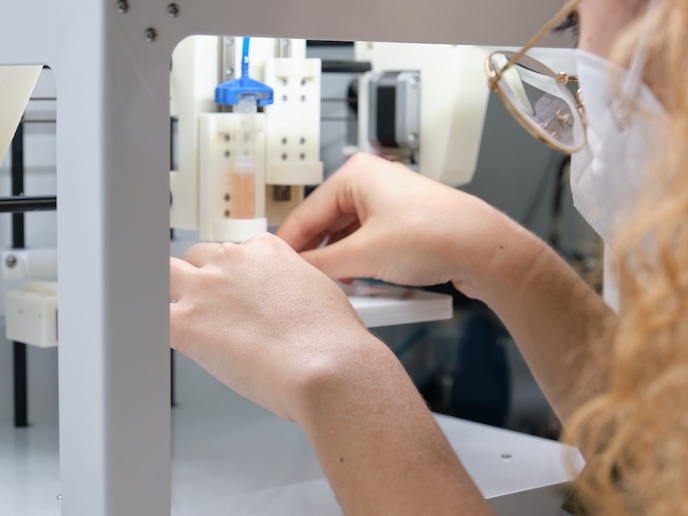Bionic human microtissues drive better drug discovery
The discovery of new pharmaceuticals has a high failure rate. One of the main causes is that, owing to physiological and genetic differences, animal models don’t accurately predict human responses. Consequently, the cost of developing a single drug has been estimated at over USD 2.6 billion(opens in new window). One way to increase predictivity is to use a microfluidic platform to mimic human physiology, embedded with human microtissues showing the relevant genetics and metabolism. Taking this approach, the OCLD project, funded by the European Research Council(opens in new window), went a step further, integrating electronic sensors into the microtissues. “Our DynamiX platform allowed us to ‘communicate’ with human organs, generating data about disease mechanisms, like kidney damage or viral infection. Understanding these mechanisms allows us to identify better drugs,” explains project coordinator Yaakov Nahmias(opens in new window) from the Hebrew University of Jerusalem(opens in new window), the project host. DynamiX recently received the Seal of Excellence from the European Commission which a spin-off company, Tissue Dynamics(opens in new window), is now commercialising.
The power of miniature models
OCLD grew out of the HeMiBio project which developed the first sensor-embedded microtissue in 2012, for L’Oréal. Microtissues are miniature models of human organs. OCLD took human cells from the liver, kidney or lungs, then using genetic engineering techniques, grew them outside the body. The cells were mixed with endothelial cells(opens in new window) to make blood vessels, helping them to assemble into human tissue, about half a millimetre in diameter. These microtissues could perform as they would inside the human body. Each microtissue contains one to four oxygen sensors, about the width of a human hair, tracking tissue respiration over several months. The tissues are placed in a microfluidic chip, where additional electrochemical sensors monitor tissues’ consumption of glucose, lactate and glutamine continuously for over a month. Software uses signals from the platform to create computational models of cellular metabolism and identify problems that indicate disease. Different drugs were then introduced to the microtissue models. With their liver model, the team found that the HIV drug Stavudine(opens in new window) caused fatty liver disease due to insufficient lipid oxidation, similar to rodent models. However, in contrast to animal observations, the epilepsy drug Valproate(opens in new window) increased glucose uptake, causing fatty liver disease, a result published on the cover of ‘Lab on a Chip’(opens in new window). Their kidney model showed the anticancer drug Cisplatin(opens in new window) causes kidney damage through lipid accumulation, rather than blood vessel expansion as in rodents. The work, published on the cover of ‘Science Translational Medicine’(opens in new window), showed that Cisplatin’s damage can be blocked when combined with Empagliflozin(opens in new window) and, excitingly, that patients receiving both drugs were protected from the worst effects of chemotherapy. “In addition to promising safer chemotherapeutics, this work is applicable to other areas. During the COVID-19 pandemic, DynamiX identified a similar mechanism of lipid accumulation in human lung cells. Our tools identified Fenofibrate(opens in new window) as a potential antiviral compound with clinical data suggesting protection in humans from the virus,” says Nahmias. This work is currently undergoing a phase three clinical study funded by Abbott.
Launching a new paradigm in drug discovery
DynamiX offers a unique drug development tool, alerting researchers to safety concerns prior to clinical trials or regulatory approval. As it detects both longer and shorter-term drug toxicities, it can also help with establishing the Minimal Effective Dose, as well as the Maximal Safety Dose, of drugs before clinical trials. Tissue Dynamics is now raising USD 10 million for clinical studies of a new drug therapy for fatty liver disease, while also seeking funding for several clinical oncology studies to improve anticancer therapy safety.







